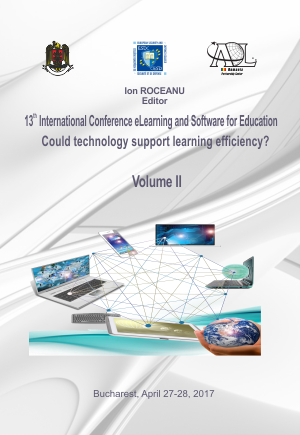USING VPYTHON PROGRAMMING FOR INTERDISCIPLINARY LEARNING AND PROBLEM SOLVING
USING VPYTHON PROGRAMMING FOR INTERDISCIPLINARY LEARNING AND PROBLEM SOLVING
Author(s): Daly Marciuc, Cristina MIRONSubject(s): Social Sciences, Education
Published by: Carol I National Defence University Publishing House
Keywords: VPython; Physics Education; Geometric Optics; Interdisciplinary learning.
Summary/Abstract: Mastering of the mathematical tools is essential for an in-depth understanding of Science. By building mathematical models and the associated computer simulations, students can understand the physical theories that explain various phenomena. The VPython programming language provides a favourable environment for effective and comprehensive learning activities. The computer models created by students form a bridge between the two fundamental components in the study of physics: the theory and the experiment. In this paper we present how we used the VPython programming language to explain the phenomenon of multiple reflections in two intersected plane mirrors. We followed the simultaneous development of students' skills in three areas: applying mathematical knowledge to solve a real-world problem, applying the principles of Physics to understand an optical phenomenon, and the ability to use the tools of information technology to verify and validate, by visualisation, the achieved mathematical reasoning. The applet generated with VPython allows viewing of the images of a point-like object in the two concurrent mirrors, showing their localization on the extensions of a successively reflected ray. The construction of VPython simulation was performed after the students had determined the number of images and after they had calculated their polar coordinates, assisted by the GeoGebra software. The representation of a successively reflected ray was not possible with GeoGebra, due to the limitations of the software in the use of a repetitive structure. The impediment was overcome by using the VPython programming language. The learning activity we present here is interdisciplinary, creating a correlation between knowledge acquired by students at three different school subjects: Mathematics, Physics and Computer Science. The outcome is the generation of a computer simulation of the phenomenon, based on the mathematical model built by the students.
Journal: Conference proceedings of »eLearning and Software for Education« (eLSE)
- Issue Year: 13/2017
- Issue No: 02
- Page Range: 106-113
- Page Count: 8
- Language: English

